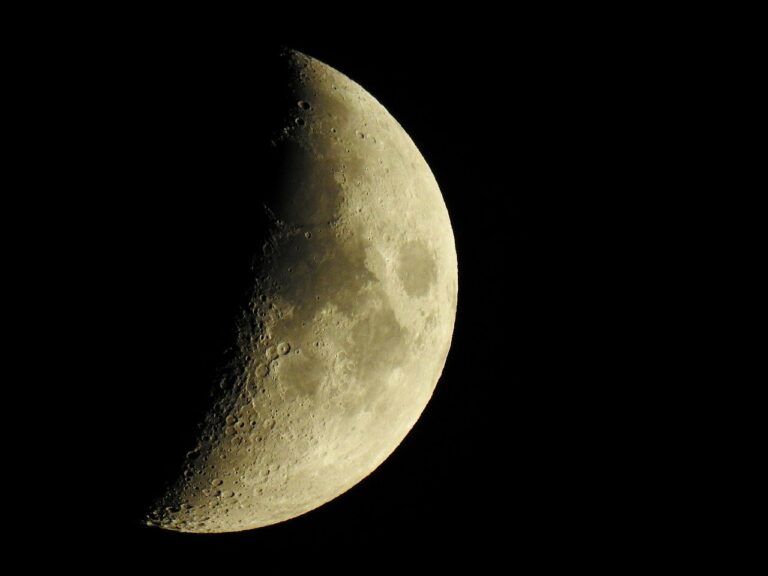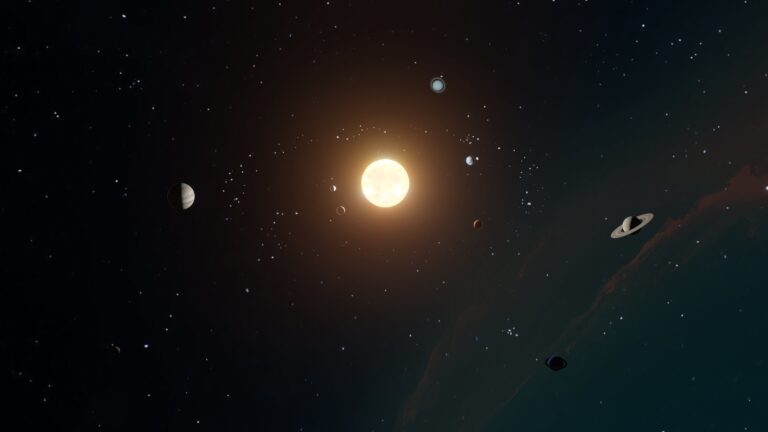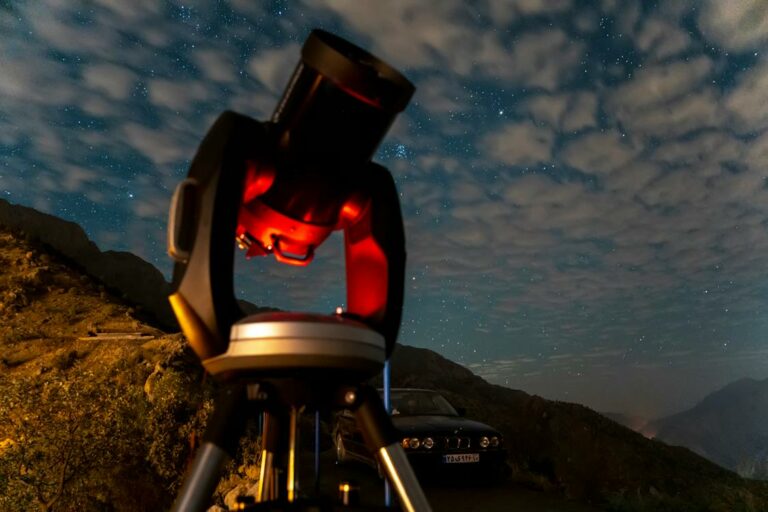Astrotourism refers to travel experiences that involve observing or exploring the cosmos. It includes activities such as stargazing, astronomy tours, visiting observatories, and space-themed attractions. The primary objective of astrotourism is to experience and appreciate the beauty and wonders of the universe.
Astrotourism has become increasingly popular in recent years, with many people seeking to escape the city lights and experience the natural beauty of the night sky. For many, the opportunity to see the stars, planets, and other celestial bodies is a once-in-a-lifetime experience that is not to be missed.
It is not only an enjoyable and awe-inspiring experience, but it also has several benefits. It can have positive impacts on health, education, the economy, and the environment. For example, studies have shown that exposure to natural darkness can improve sleep quality, reduce stress, and enhance mood.
Let’s explore astrotourism and all it has to offer.
Why book an astronomy tour?
Astronomy tours typically involve visiting observatories or other astronomical facilities, where visitors can learn about astronomy, space science, and the tools and techniques used to study the universe.
One of the main benefits of astronomy tours is the opportunity to learn from experts in the field. Many observatories and other astronomical facilities offer guided tours led by experienced astronomers or naturalists, who can provide insight into the objects and phenomena that can be observed from their telescopes and instruments. Visitors can learn about the history and science of astronomy, as well as the latest discoveries and advancements in the field.
Astronomy tours can also provide an opportunity to see some of the most advanced astronomical instruments in the world. Many observatories and facilities have cutting-edge telescopes and other instruments that are used to study the universe in unprecedented detail. Seeing these instruments up close can be a thrilling experience, and can give visitors a better appreciation for the precision and ingenuity required to study the cosmos.
Another benefit of astronomy tours is the opportunity to see the night sky from a new perspective. Many observatories and facilities are located in remote areas with little light pollution, offering an unobstructed view of the night sky. Visitors can see objects that are not visible from urban areas, and can appreciate the full majesty of the stars, planets, and other celestial objects

What are dark sky parks?
Dark sky parks are protected areas with minimal light pollution, making them ideal locations for stargazing and other astrotourism activities. Dark sky parks can be found around the world, and they offer visitors a unique opportunity to experience the full majesty of the stars, planets, and other celestial objects.
Dark sky parks offer a range of astrotourism activities. Many dark sky parks offer stargazing events, astronomy tours, and other activities that allow visitors to learn about the night sky and the science of astronomy. Some parks even have their own observatories or other astronomical facilities, where visitors can observe the night sky using advanced telescopes and other instruments.
In addition to their astrotourism benefits, dark sky parks also play an important role in conservation. By protecting the natural darkness of the night sky, these parks help to preserve the habitats and behaviors of nocturnal wildlife. They also promote energy conservation by reducing the need for artificial lighting, which can have a positive impact on the environment.

Visit space-themed attractions
Astrotourism attractions range from museums and science centers to amusement parks and other entertainment venues. They offer visitors a chance to learn about space science and exploration in a fun and engaging way.
One of the most popular types of space-themed attractions are museums and science centers. These facilities often have exhibits on the history and science of space exploration, as well as displays of artifacts and models of spacecraft and other equipment used in space missions. Many museums and science centers also have interactive exhibits and hands-on activities that allow visitors to learn about space science and exploration in a fun and engaging way.
Another popular type of space-themed attraction is the amusement park or entertainment venue. These venues often have space-themed rides and attractions, as well as exhibits and shows related to space science and exploration. Some amusement parks even have virtual reality experiences that simulate space missions and other space-related activities.
Other space-themed attractions include planetariums, which offer visitors a chance to see the night sky and learn about astronomy in an immersive and engaging way. Some planetariums have live shows and presentations led by experienced astronomers or space scientists, which can provide a fascinating look at the universe.

Benefits of astrotourism
Health benefits
There are many health benefits associated with stargazing and other astrotourism activities.
One of the main benefits of astrotourism is stress reduction. Spending time in nature and under the stars has been shown to have a calming effect on the mind and body. The natural darkness of the night sky can also help to regulate sleep patterns, which can improve overall health and well-being.
Astrotourism can also provide opportunities for physical exercise, such as hiking to remote stargazing locations or participating in astronomy tours that involve walking or other physical activity. These activities can help to improve cardiovascular health and promote physical fitness.
Overall, astrotourism provides a sense of connection to the natural world and the wider universe. This can help to promote a sense of awe and wonder, and can provide a much-needed perspective on our place in the world. This sense of connection can also foster a sense of community and social connection, as people come together to share in the beauty and excitement of the night sky.
Educational benefits
Astrotourism provides a range of educational benefits, allowing visitors to learn about the science of astronomy and the wonders of the universe in a fun and engaging way.
One of the main educational benefits of astrotourism is the opportunity to learn about the night sky and the science of astronomy. Visitors can learn about the stars, planets, and other celestial objects, as well as the tools and techniques used by astronomers to study the universe.
Astrotourism can also provide opportunities to learn about the history of astronomy and space exploration. Many space-themed attractions and museums have exhibits on the history of space travel, as well as displays of spacecraft, equipment, and other artifacts used in space missions. This can be a great way to learn about the pioneers of space exploration and the evolution of space technology.
Economic benefits
One of the main economic benefits of astrotourism is job creation. Astrotourism destinations, such as dark sky parks, astronomy tours, and space-themed attractions, require a range of staff, from astronomers and guides to support staff and customer service representatives. This can provide a boost to local economies and help to support small businesses.
Astrotourism can also increase revenue from tourism, as visitors travel to see the night sky and other astrotourism attractions. This can provide a source of income for local businesses, including restaurants, hotels, and other service providers. In addition, astrotourism can help to diversify local economies, reducing dependence on traditional industries such as agriculture or manufacturing.
Astrotourism can also provide opportunities for cultural exchange and international tourism. Visitors from around the world can come to see the night sky and learn about the science of astronomy, creating opportunities for cultural exchange and cross-cultural learning. This can provide a boost to local economies and help to promote international understanding and cooperation.
Environmental benefits
Many astrotourism destinations, such as dark sky parks, have policies in place to protect the night sky and reduce light pollution. This can help to preserve natural resources, reduce energy consumption, and promote sustainable tourism practices.
Astrotourism can also provide opportunities for environmental education and research. Many astrotourism destinations have educational programs that teach visitors about the natural environment and the importance of conservation. In addition, astrotourism can provide opportunities for scientific research, such as studying the effects of light pollution on wildlife or monitoring changes in the night sky.
Astrotourism promotes the appreciation and preservation of cultural and natural heritage. Many astrotourism destinations are located in areas with important cultural or natural heritage sites, such as national parks or historical landmarks. By promoting the appreciation and preservation of these sites, astrotourism can help to protect cultural and natural resources for future generations.
Top astrotourism destinations
Dark sky parks in the US
Stargazing in Chile
Northern Lights in Iceland
Tips for planning an astrotourism trip
Time of year to travel
Spring (Northern Hemisphere: March – May, Southern Hemisphere: September – November):
- Increasing darkness as nights grow longer.
- Mild temperatures in many regions for comfortable stargazing.
- Opportunities to view celestial events like meteor showers.
Summer (Northern Hemisphere: June – August, Southern Hemisphere: December – February):
- Shorter nights with reduced darkness for stargazing.
- Favorable weather conditions and clear skies in many locations.
- Possibility to observe planets and constellations.
Autumn (Northern Hemisphere: September – November, Southern Hemisphere: March – May):
- Darker nights return as days become shorter.
- Comfortable temperatures for nighttime observation.
- Opportunities to witness meteor showers and celestial phenomena.
Winter (Northern Hemisphere: December – February, Southern Hemisphere: June – August):
- Longest, darkest nights provide optimal stargazing conditions.
- Clear skies with reduced humidity and atmospheric turbulence.
- Ideal for viewing celestial wonders like the Northern Lights.
Year-Round Opportunities:
- Some regions with moderate climates offer astrotourism opportunities throughout the year.
- Research specific locations for local weather patterns and suitability.
Considerations for Timing:
Monsoon Seasons and Extreme Temperatures:
- Some areas experience monsoon seasons or extreme cold during specific seasons, affecting travel and stargazing.
- Research climate conditions of your chosen destination.
Seasonal Events and Festivals:
- Check for local events or festivals that could impact travel and accommodation availability.
- Some regions may host special astrotourism activities, such as astronomy festivals, guided tours, or workshops during specific times of the year.
Choosing a tour operator
If you’re interested in going on an astronomy tour for astrotourism, choosing the right tour operator is crucial. Here are some factors to consider when selecting a tour operator:
- Reputation: Look for a tour operator with a good reputation for providing high-quality tours. Check online reviews and ratings, and ask for recommendations from friends or family members who have gone on astronomy tours before.
- Expertise: Look for a tour operator with expertise in astronomy and astrotourism. This could include professional astronomers, astrophotographers, or other experts who can provide a deeper understanding of the night sky.
- Equipment: Check what type of equipment the tour operator provides. Are telescopes and other equipment included in the tour package, or do you need to bring your own? Make sure that the equipment is high-quality and well-maintained.
- Itinerary: Look for a tour operator with a well-planned itinerary that includes a range of activities, such as stargazing, night sky photography, and visits to observatories or other space-themed attractions.
- Safety: Make sure that the tour operator prioritizes safety, especially when visiting remote or unfamiliar locations. This could include providing trained guides or ensuring that participants have appropriate gear and clothing.
- Price: Finally, consider the price of the tour package and whether it fits within your budget. Keep in mind that the cost may vary depending on the length of the tour, the type of activities included, and the level of expertise of the tour operator.
Packing list for astrotourism trips
Astrotourism trips are a unique experience that require some specialized gear and equipment. Here is a list of things you should consider packing for your astrotourism adventure:
- Warm and comfortable clothing: When stargazing at night, temperatures can drop significantly. Make sure to pack warm layers, such as a fleece jacket, insulated pants, and a beanie. Consider packing gloves and a scarf as well.
- Proper footwear: Depending on the location, you may need sturdy, waterproof shoes or boots. Make sure to pack footwear that is comfortable for walking, hiking, or standing for long periods of time.
- Portable chair or mat: It's important to have a comfortable place to sit or lie down while observing the night sky. Consider packing a portable chair or mat that is lightweight and easy to carry.
- Headlamp or flashlight: A headlamp or flashlight will help you navigate in the dark and find your way back to your accommodations. Consider bringing extra batteries or a rechargeable power bank.
- Camera and tripod: If you're interested in astrophotography, consider packing a camera with a manual mode and a sturdy tripod. You may also want to bring extra memory cards and batteries.
- Binoculars or telescope: While tour operators often provide telescopes or binoculars, it's a good idea to bring your own if you have them. Make sure to pack them securely and consider using a padded case.
- Maps and guidebooks: Depending on your destination, you may need maps and guidebooks to help you navigate and learn about the local geography, culture, and history.
- Sunscreen and sunglasses: Even if you're going on a nighttime astrotourism trip, you may need sunscreen and sunglasses during the day. Make sure to pack a high SPF sunscreen and polarized sunglasses to protect your eyes from the sun's glare.
- Water and snacks: It's important to stay hydrated and fueled during your astrotourism trip. Consider packing a reusable water bottle and snacks such as trail mix, granola bars, or fruit.
- First aid kit: Accidents can happen, so it's a good idea to pack a small first aid kit with essentials such as band-aids, pain relievers, and insect repellent.
Future of astrotourism
The future of astrotourism holds promising trends and developments. Sustainability and conservation efforts will gain prominence as destinations work to combat light pollution and protect natural environments.
Technological advancements will introduce innovative tools for stargazing and astrophotography, potentially incorporating virtual and augmented reality experiences.
Space tourism is emerging as a popular facet of astrotourism, with companies like SpaceX and Virgin Galactic offering private space travel experiences. Astrotourism’s educational potential is growing, providing opportunities for science education and outreach.
Lastly, new astrotourism destinations may emerge as more regions invest in dark sky preservation and related infrastructure, offering fresh and exciting night sky exploration opportunities.
If you’ve never considered astrotourism before, now is the perfect time to start. There are countless destinations around the world where you can explore the night sky and learn about the universe.
One of the great things about astrotourism is that it can be a transformative experience. Seeing the stars and planets up close can be a humbling and awe-inspiring experience, and it can give you a new perspective on the world and the universe around us. It can also be a great way to escape the stresses of daily life and connect with nature.
If you’re interested in experiencing astrotourism, start by researching destinations that are known for their dark skies and stargazing opportunities. Look for tour operators that specialize in astronomy and astrotourism, and consider booking a trip with them. Don’t be afraid to ask questions and learn as much as you can about the destinations and experiences that are available.

Andrew
With years of experience and a passion for exploring the cosmos, I want to be your go-to destination for all things celestial. My mission is to bring the wonders of the universe to your fingertips and demonstrate how the art of stargazing and telescope therapy can nurture not only your astronomical curiosity but also your mental health. Explore the cosmos with me and discover the profound connection between the night sky and your inner peace.








+ There are no comments
Add yours